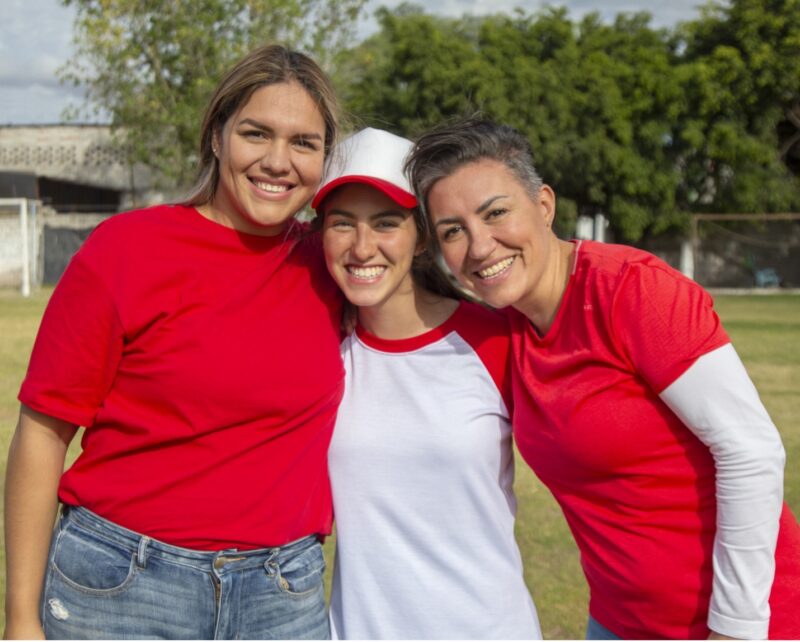Engaging in regular physical activity is important for the health and well-being of children and aids in their cognitive and social-emotional development (Committee on Physical Activity and Physical Education in the School Environment et al., 2013). Encouraging children to be active at an early age can help them establish and build a foundation that could promote health and fitness throughout their lives.
Incorporating physical activity into everyday moments is one way to support movement and activity. For example, dancing to favorite songs, building and moving through obstacle courses, riding bikes, skipping, or going for walks to the park give children opportunities to move throughout the day. In addition, with your child, identify your child’s interests when it comes to being active, and have them try new and different activities. This exploration can be a fun learning process, especially while your child is young.
As your child ages and enters the school-age years, you may notice them gravitating towards certain activities or showing an interest in an activity or a sport. Your child’s personality traits, genetics, and athletic ability can influence their attitudes toward specific sports or activities, and your child will likely fall into one of the following fitness personalities (Nemours Kids Health, 2022):
- The athlete: This type of child has identified a specific sport or activity that they enjoy, and they may show exceptional ability and choose to compete in this sport at a high level, such as participating on a travel team or high school team.
- The casual athlete: This type of child is interested in being active, but they may not be an outstanding player and could become discouraged in a competitive environment.
- The nonathlete: This type of child may not be interested in engaging in physical activity, or they may lack athletic ability, and a parent may need to encourage them to stay active.

Parents shape their child’s experiences and participation in sports from childhood through adolescence (Hardwood and Knight, 2015). Determining where your child’s fitness personality aligns regarding individual or group sports and/or activities could help you find the right activities for your child and ensure they get a suitable amount of physical activity (Nemours Kids Health, 2022). While there are some children who may want to excel in a sport, there are others who are happy with casual participation (Nemours Kids Health, 2022).
As a parent, talk with your child to learn about their interests and goals regarding participating in sports or physical activities. Understanding your child’s desires and perspectives can help you align your expectations to your child’s goals. For example, as a child you may have participated in baseball competitively and dream of your child doing this too. However, you may learn that your child doesn’t really like team sports or only wants to be a casual or social player. Furthermore, your child’s fitness personality for one sport or activity, or all sports or activities, may change and evolve over time.

In addition, consider incorporating physical activity into your family’s everyday routines. To accomplish this, you could take an evening bike ride or walk, turn on music and dance while you set or clear the table, or play active games after dinner like musical chairs or hide-and-seek. Being active as a family can help model positive behaviors, show children the importance of being active, and make physical activity a normal part of life.
References
Committee on Physical Activity and Physical Education in the School Environment, Food and Nutrition Board, Kohl, H. W., Cook, H. D., & Institute of Medicine. (2013). Educating the student body: Taking physical activity and physical education to school. The National Academies Press. https://www.ncbi.nlm.nih.gov/books/NBK201500/pdf/Bookshelf_NBK201500.pdf
Gao., Z., Chee, C. S., Norjali Wazir, M. R. W., Wang, J., Zheng, X., & Wang, T. (2024). The role of parents in the motivation of young athletes: A systematic review. Frontiers in Psychology, 14. https://doi.org/10.3389/fpsyg.2023.1291711
Harwood, C. G., & Knight, C. J. (2015). Parenting in youth sport: A position paper on parenting expertise. Psychology of Sport and Exercise, 16, 24–35. https://doi.org/10.1016/j.psychsport.2014.03.001
Nemours Kids Health. (2022). Motivating kids to be active. Nemours Kids Health. https://kidshealth.org/en/parents/active-kids.html
United States Department of Health and Human Services. (2018). Physical activity guidelines for Americans (2nd ed.). U.S. Department of Health and Human Services. https://health.gov/sites/default/files/2019-09/Physical_Activity_Guidelines_2nd_edition.pdf








